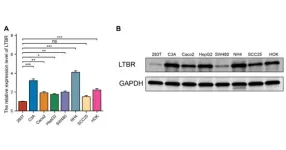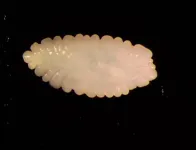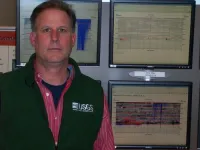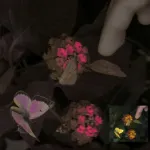(Press-News.org) First study to examine the impact of tissue contamination on AI models
‘If it’s paying attention to the tissue contaminants, it’s paying less attention to the patient’s tissue that is being examined’
‘Pathologists fear — and AI companies hope — that the computers are coming for our jobs. Not yet.’
Human pathologists are extensively trained to detect when tissue samples from one patient mistakenly end up on another patient’s microscope slides (a problem known as tissue contamination). But such contamination can easily confuse artificial intelligence (AI) models, which are often trained in pristine, simulated environments, reports a new Northwestern Medicine study.
“We train AIs to tell ‘A’ versus ‘B’ in a very clean, artificial environment, but, in real life, the AI will see a variety of materials that it hasn’t trained on. When it does, mistakes can happen,” said corresponding author Dr. Jeffery Goldstein, director of perinatal pathology and an assistant professor of perinatal pathology and autopsy at Northwestern University Feinberg School of Medicine.
“Our findings serve as a reminder that AI that works incredibly well in the lab may fall on its face in the real world. Patients should continue to expect that a human expert is the final decider on diagnoses made on biopsies and other tissue samples. Pathologists fear — and AI companies hope — that the computers are coming for our jobs. Not yet.”
In the new study, scientists trained three AI models to scan microscope slides of placenta tissue to (1) detect blood vessel damage; (2) estimate gestational age; and (3) classify macroscopic lesions. They trained a fourth AI model to detect prostate cancer in tissues collected from needle biopsies. When the models were ready, the scientists exposed each one to small portions of contaminant tissue (e.g. bladder, blood, etc.) that were randomly sampled from other slides. Finally, they tested the AIs’ reactions.
Each of the four AI models paid too much attention to the tissue contamination, which resulted in errors when diagnosing or detecting vessel damage, gestational age, lesions and prostate cancer, the study found.
The findings were published earlier this month in the journal Modern Pathology. It marks the first study to examine how tissue contamination affects machine-learning models.
‘For a human, we’d call it a distraction, like a bright, shiny object’
Tissue contamination is a well-known problem for pathologists, but it often comes as a surprise to non-pathologist researchers or doctors, the study points out. A pathologist examining 80 to 100 slides per day can expect to see two to three with contaminants, but they’ve been trained to ignore them.
When humans examine tissue on slides, they can only look at a limited field within the microscope, then move to a new field and so on. After examining the entire sample, they combine all the information they’ve gathered to make a diagnosis. An AI model performs in the same way, but the study found AI was easily misled by contaminants.
"The AI model has to decide which pieces to pay attention to and which ones not to, and that’s zero sum,” Goldstein said. “If it’s paying attention to tissue contaminants, then it’s paying less attention to the tissue from the patient that is being examined. For a human, we’d call it a distraction, like a bright, shiny object.”
The AI models gave a high level of attention to contaminants, indicating an inability to encode biological impurities. Practitioners should work to quantify and improve upon this problem, the study authors said.
Previous AI scientists in pathology have studied different kinds of image artifacts, such as blurriness, debris on the slide, folds or bubbles, but this is the first time they’ve examined tissue contamination.
‘Confident that AI for placenta is doable’
Perinatal pathologists, such as Goldstein, are incredibly rare. In fact, there are only 50 to 100 in the entire U.S., mostly located in big academic centers, Goldstein said. This means only 5% of placentas in the U.S. are examined by human experts. Worldwide, that number is even lower. Embedding this type of expertise into AI models can help pathologists across the country do their jobs better and faster, Goldstein said.
“I'm actually very excited about how well we were able to build the models and how well they performed before we deliberately broke them for the study,” Goldstein said. “Our results make me confident that AI evaluations of placenta are doable. We ran into a real-world problem, but hitting that speedbump means we're on the road to better integrating the use of machine learning in pathology.”
END
“[...] we identified LTBR as a potential target for cancer immunotherapy and a marker of immune infiltration and poor prognosis.”
A new research paper was published in Aging (listed by MEDLINE/PubMed as "Aging (Albany NY)" and "Aging-US" by Web of Science) Volume 16, Issue 1, entitled, “Systematic analysis of the prognostic value and immunological function of LTBR in human cancer.”
Lymphotoxin beta receptor (LTBR) is a positive T cell proliferation regulator gene. It is closely associated with the tumor immune microenvironment. However, its role in cancer and ...
The CUNY Graduate School of Public Health and Health Policy (CUNY SPH) has announced an expansion and endowment of the Molina Health Equity Scholarship Fund as a groundbreaking and permanent source of support for students dedicated to advancing health equity in underserved Hispanic and Latino communities.
Established by Dr. Marilyn Aguirre-Molina, CUNY SPH professor emerita and CUNY SPH Foundation Board member, and distinguished academician Dr. Carlos W. Molina, the Molina Health Equity Scholarship Fund now becomes the first named and endowed master’s degree scholarship in the school’s ...
A recent study from researchers at University Hospitals (UH) Connor Whole Health examined variables associated with engagement in (1) integrative health and medicine (IHM) and (2) nonpharmacologic modalities rather than opioids among United States adults with chronic pain. The study, published in the Journal of Pain Research, uncovered disparities in access to these modalities, particularly among older adults, Black/African American individuals, and those with higher depressive symptoms and lower education and income levels, who are more likely to have chronic pain.
The researchers used data ...
CHAMPAIGN, Ill. — More than 25% of the young adults surveyed in a recent study mistakenly believed that sexual activity increases older adults’ risk of heart attack and that disinterest in sex is a normal and inevitable part of aging. While most of those in the study had permissive views about sexual activity in later life, the findings also shed light on the misconceptions and ageist views that can infringe on older adults’ rights to sexual expression.
More than 270 young adults ages 18-35 participated in the study, which assessed their level of knowledge about sexuality in older adulthood, their general attitudes toward ...
Marine heat waves appear to trigger earlier reproduction, high mortality in early life stages and fewer surviving juvenile Pacific cod in the Gulf of Alaska, a new study shows. These changes in the hatch cycle and early growth patterns persisted in years following the marine heat waves, which could have implications for the future of Gulf of Alaska Pacific cod, an economically and culturally significant species,
END ...
The Seismological Society of America (SSA) will present its highest honor, the 2024 Harry Fielding Reid Medal, to Norman A. Abrahamson, adjunct professor of civil and environmental engineering at the University of California, Berkeley and University of California, Davis, and former engineering seismologist at Pacific Gas & Electric Co.
Abrahamson, who will receive the Reid Medal at the 2024 SSA Annual Meeting, is recognized as a global leader in the field of probabilistic seismic hazard assessment (PSHA). Within the seismic hazard community, he is known for developing new methodologies as well as refining state-of-the-art practices ...
Doyeon Kim (DK) has been honored with the Seismological Society of America’s (SSA) 2024 Charles F. Richter Early Career Award for his scientific productivity across a variety of topics, including recent work on Martian seismology and his pioneering approaches to seismic imaging.
Kim, a lecturer in planetary science in the Faculty of Engineering at Imperial College London, will receive the Richter Award at the 2024 SSA Annual Meeting.
“I am sincerely grateful for this award, which I humbly attribute to the collective efforts of those who have played a pivotal role in shaping my academic career. This recognition fuels my dedication to furthering ...
For his work leading to profound improvements in how earthquake science is communicated to students, the media and decision makers, the Seismological Society of America (SSA) honors Harley M. Benz with the 2024 Frank Press Public Service Award.
Benz, a former U.S. Geological Survey technical coordinator for the Advanced National Seismic System (ANSS) and the director of the USGS National Earthquake Information Center (NEIC), will receive the Press Award at the 2024 SSA Annual Meeting.
In his nomination of Benz for the award, Gavin Hayes, senior science advisor for earthquake ...
For his outstanding contributions as chair of the SSA Publications Committee, the Seismological Society of America (SSA) will present Douglas Scott Dreger with its 2024 Distinguished Service Award (DSA). Dreger will receive the award at the 2024 SSA Annual Meeting.
Dreger, a professor of geophysics at the University of California, Berkeley, served as Publications Committee chair between 2016 and 2022.
Dreger “instigated a broad range of initiatives intended to reinforce the reputation and financial performance ...
A new camera system allows ecologists and filmmakers to produce videos that accurately replicate the colors that different animals see in natural settings, Vera Vasas at the University of Sussex, UK, and colleagues from the Hanley Color Lab at George Mason University, US, report in the open access journal PLOS Biology, publishing January 23rd.
Different animals perceive the world differently because of the capabilities of the photoreceptors in their eyes. For example, animals like honeybees and some birds can see UV light, which are outside the range of human perception. Reconstructing the colors that animals ...






